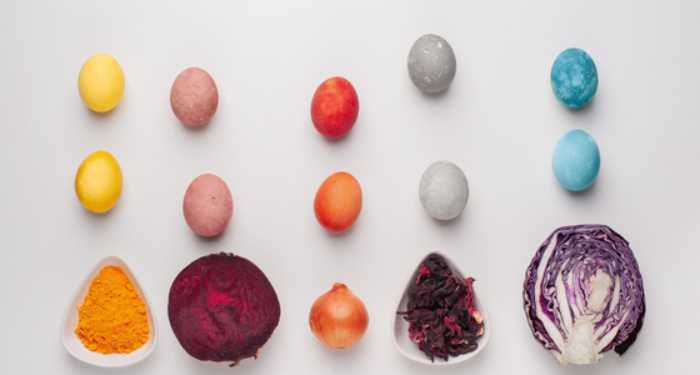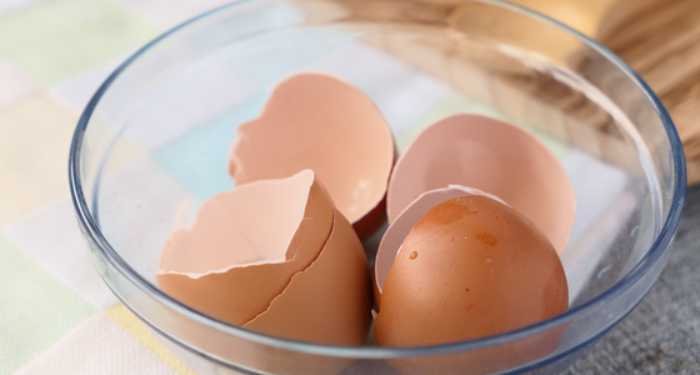How to Naturally Dye Easter Eggs
Posted March 22, 2023
Easter is right around the corner, which means families across the country will be participating in the tradition of turning hard-boiled eggs into festively colored Easter eggs. If you’re concerned about the potential health risks and environmental impacts of using food dyes, choosing natural alternatives may be a better option. By using natural dyes derived from plant-based sources, you can avoid the negative effects of artificial dyes while enjoying a safer, more sustainable approach to dyeing your Easter eggs.
Tips for Making Natural Dye
If you are trying to limit your use of food dyes, you can color your eggs naturally with common household ingredients. The process is simple, and you probably have most of the ingredients in your pantry.
Vinegar is a key ingredient that facilitates the absorption of color into your Easter eggs, as it acts as a mild acid that doesn’t harm the integrity of the eggshells. When combined with pigmented water, vinegar coats the surface of the eggshells, infusing them with a rich and vibrant hue. To create unique and natural color variations, you can experiment with a variety of ingredients like turmeric, paprika, onions, oranges, beets, raspberries, and grapes to color the water.
Below is a list of ingredients that will help you get started:
- Yellow: Turmeric, Carrots, Chamomile, Oranges
- Orange: Paprika, Yellow Onions
- Red/Pink: Beets, Cranberry Juice, Red Grapes
- Blue: Blueberries, Red Cabbage
- Brown: Coffee/Tea Grounds, Dill Seed
- Green: Red Onions, Yellow Apples
- Lavender: Grape Juice
Making natural dye from beets, cabbage, or other plant-based sources is a simple and fun process. For example, to make beet dye, start by chopping up a beet into small pieces and placing it in a pot with water. Bring the water to a boil and then let it simmer for 30 minutes. Remove the pot from the heat and strain the liquid into a container. For cabbage dye, chop up a head of cabbage and add it to a pot with water. Bring the water to a boil, then let it simmer for about an hour, or until the cabbage leaves lose their color. Strain the liquid into a container, and your dye is ready to use! You can experiment with different ratios of water to plant material to achieve different shades of color, and use the dye to color eggs, fabrics, or other materials. You can find detailed instructions online at Better Homes & Gardens.
Composting Eggshells: A Nutrient-Rich Solution for Your Garden
Do you ever wonder what happens to all those colorful eggshells each year? The majority of them end up as waste, but eggshells have beneficial properties that can prevent them from ending up in a landfill. Eggshells can be composted or added directly to your garden as both a supplement and a pest deterrent.
Eggshells provide your compost with essential nutrients and enrich the soil with calcium, which helps build healthy plants. These nutrients will also help prevent blossom end rot in tomatoes, squash, peppers, and other fruiting vegetables. Eggshells also help prevent slugs, snails, and other insects from getting into your garden. They are also believed to deter deer from gardens because they don’t like the smell of albumen, the protein found in egg whites.

Crushing or grinding eggshells is not a requirement for your compost, but it does help speed up the composting process, as the smaller pieces will break down faster. Using a coffee grinder or blender works well to break up the pieces and spread them evenly throughout your compost.
If you’re composting the shells from raw eggs, it’s important to note that dirty eggshells can attract unwanted pests and animals, so be sure to wash out your shells in warm water and leave them to dry before adding the eggs to your compost bin. Doing so will also help to eliminate Salmonella bacteria from entering your garden. If desired, you can bake eggshells in the oven for about 10 minutes at 350-degrees to remove the bacteria; although most bacteria are killed naturally at the temperatures reached during the composting process.
Using natural dyes can be a fun way to color your Easter eggs this year, as well as provide a nutrient boost to your compost and protection from unwanted guests. Even if you don’t dye your eggs, help minimize waste by recycling your eggshells and add all the nutrients they contain to your garden.

